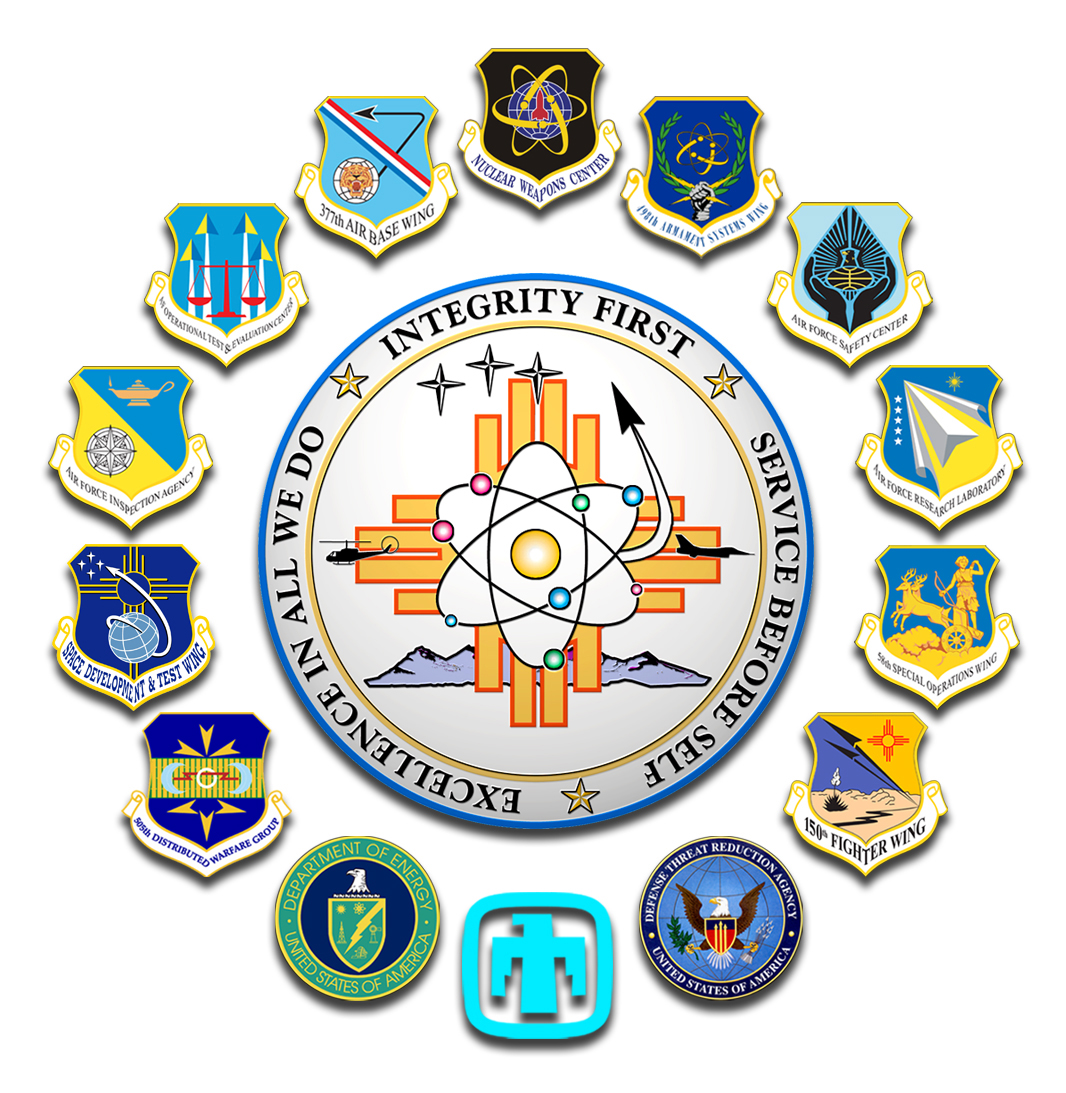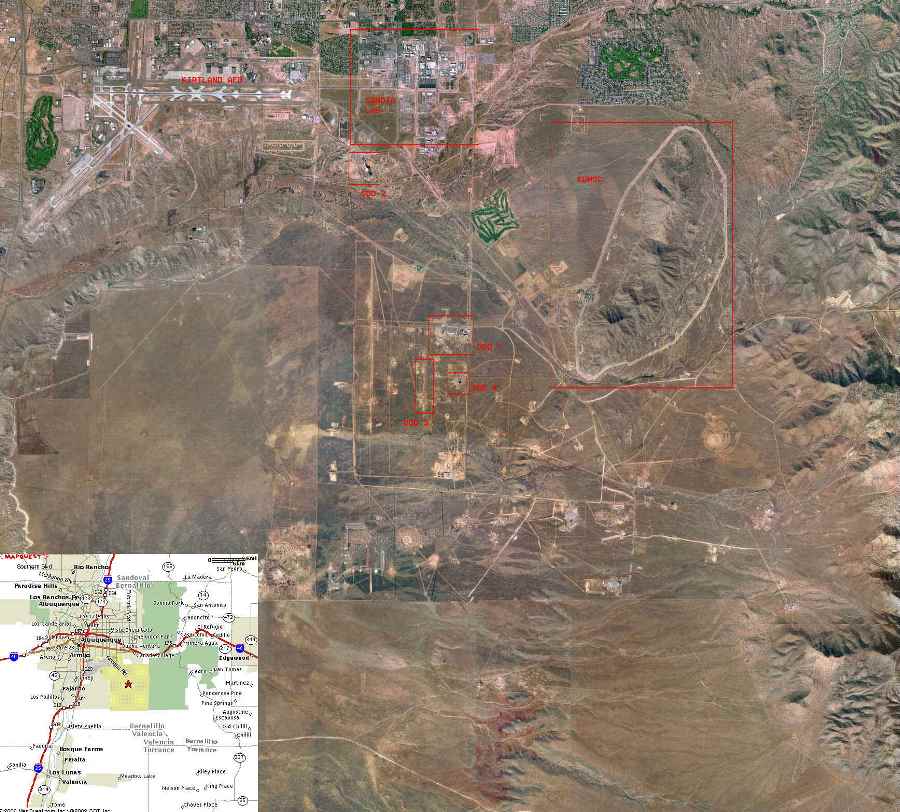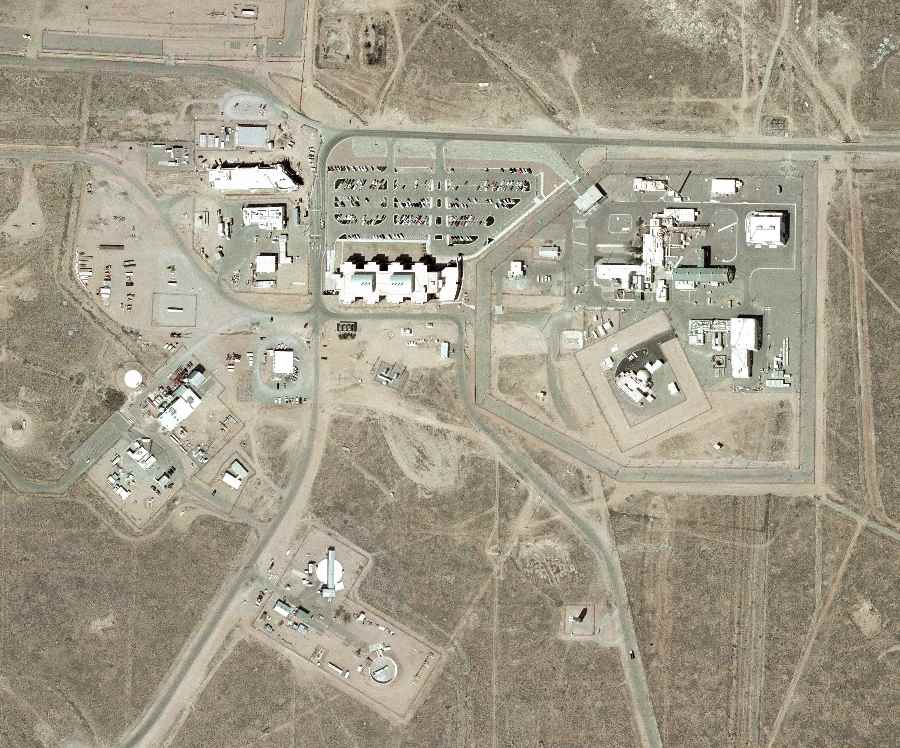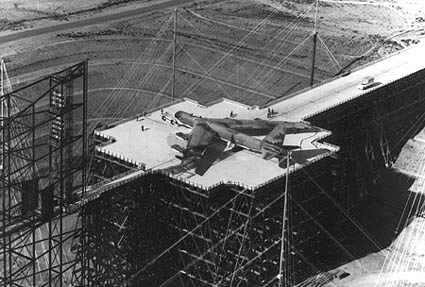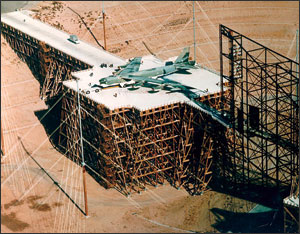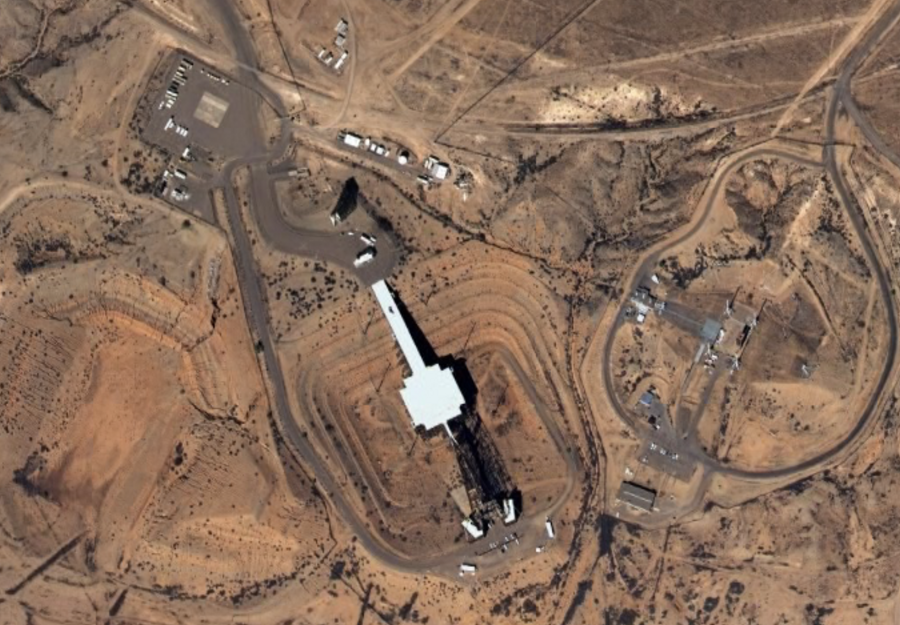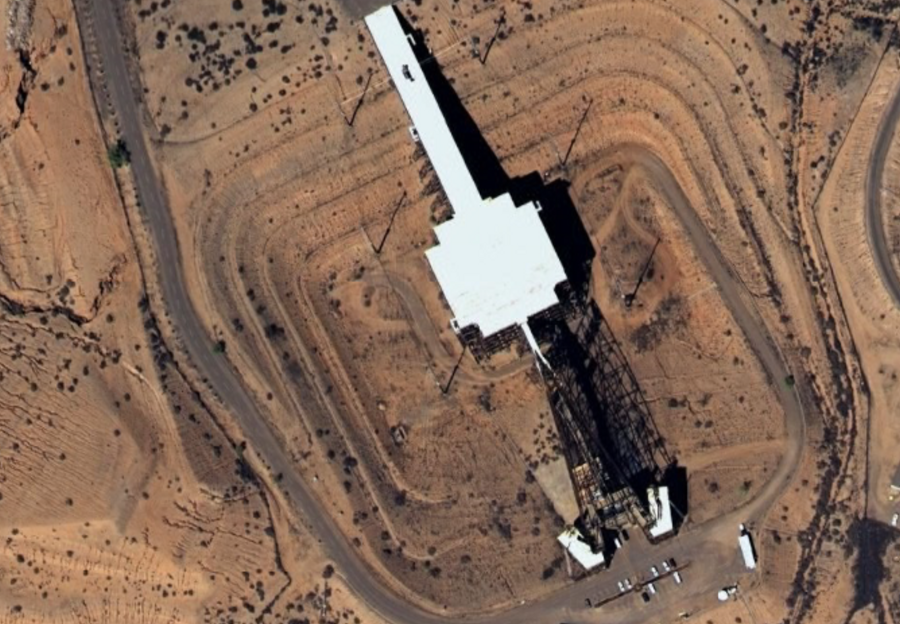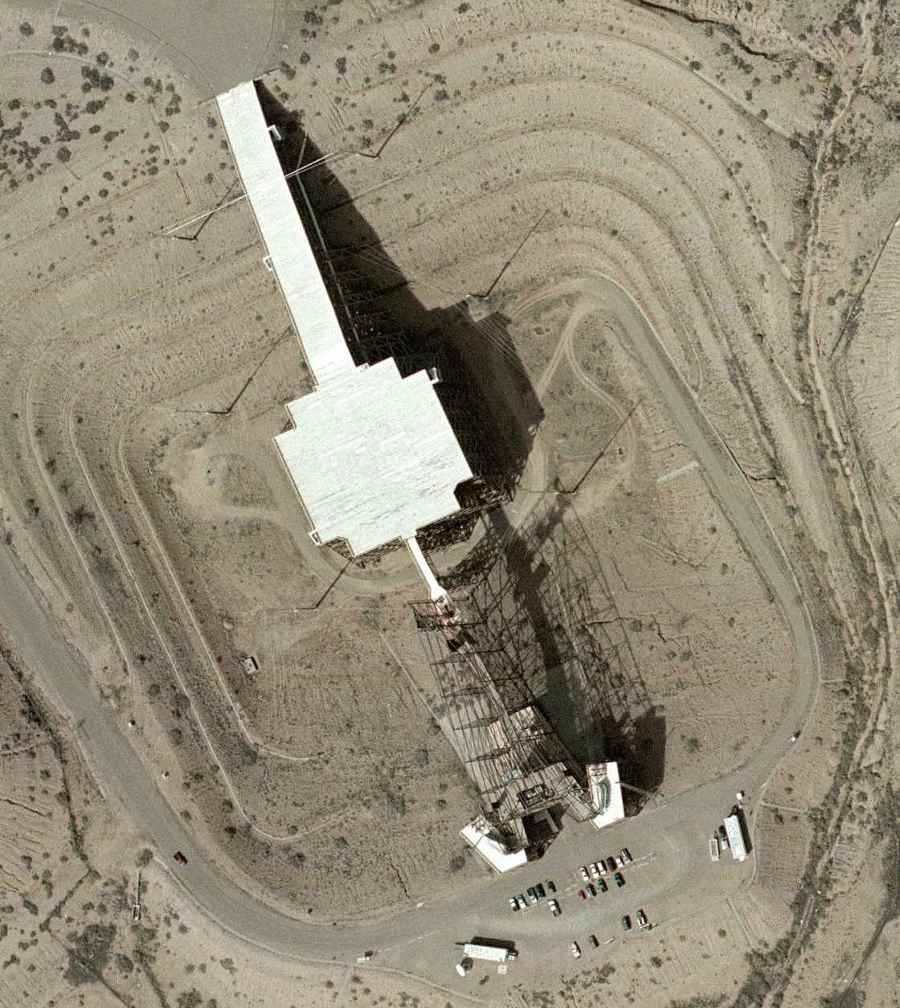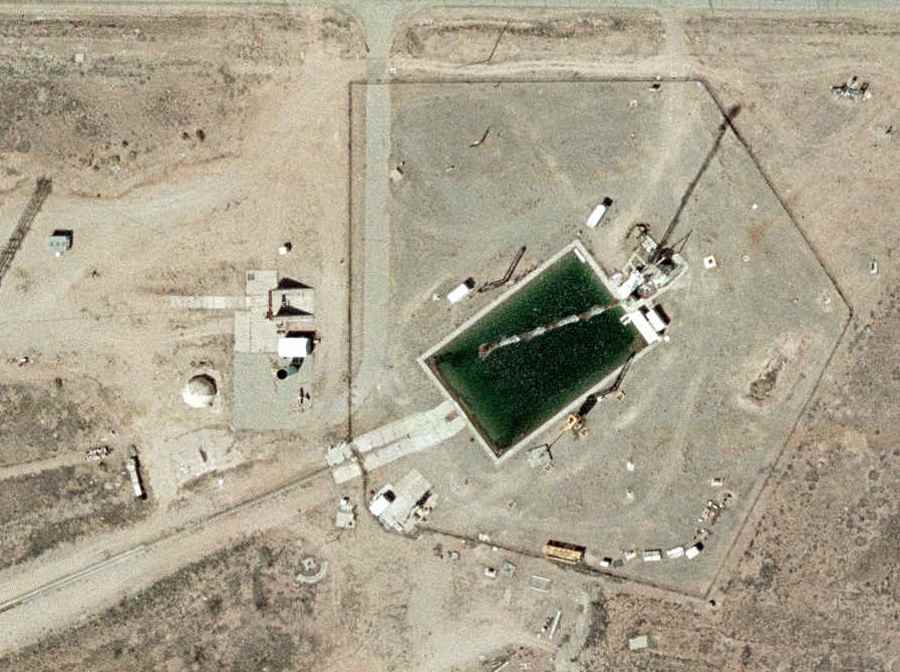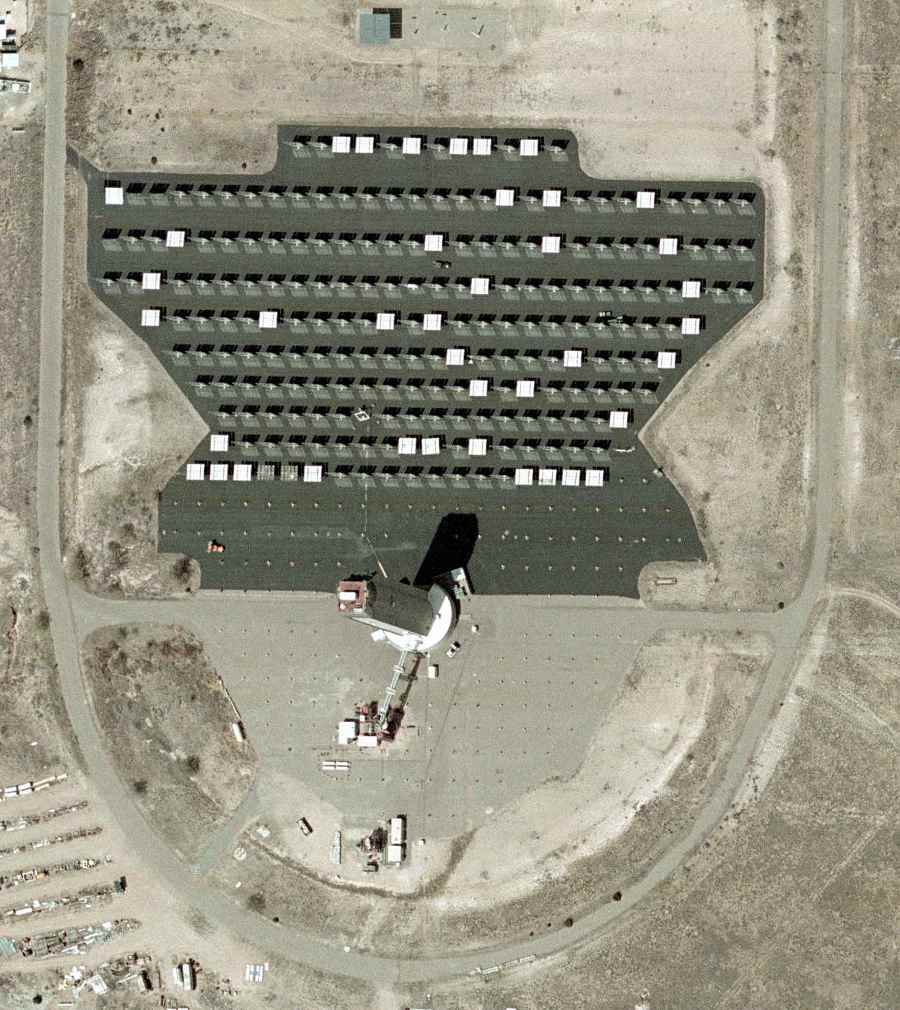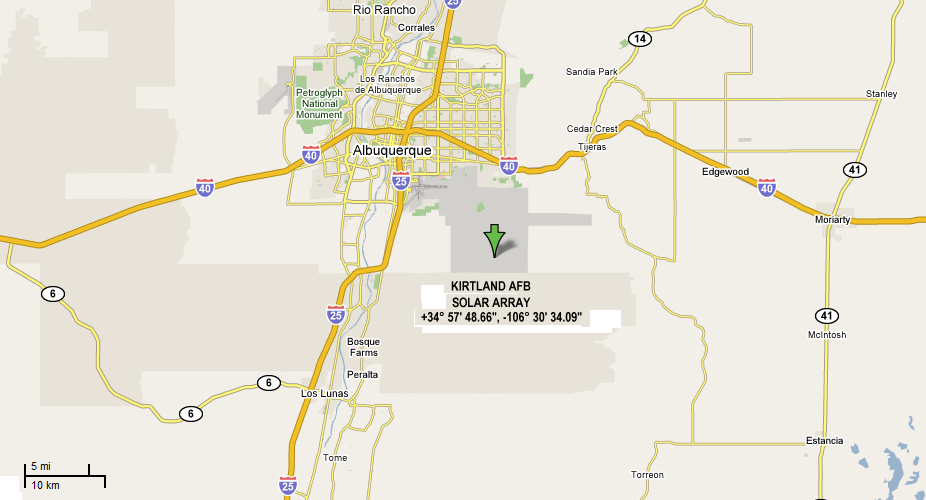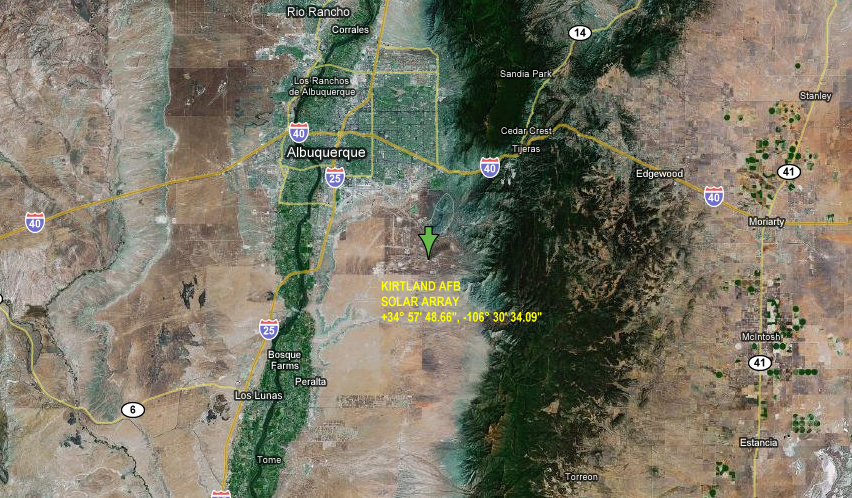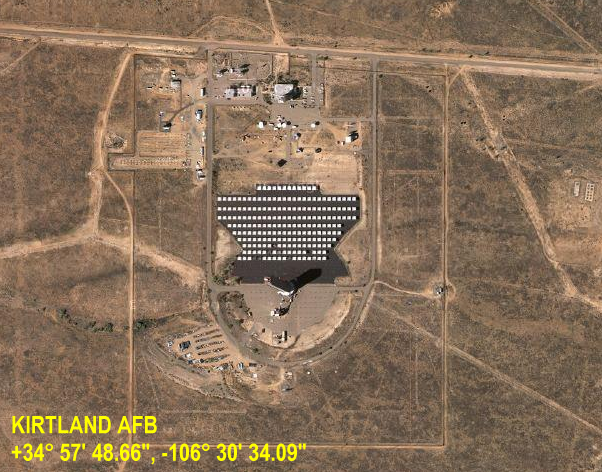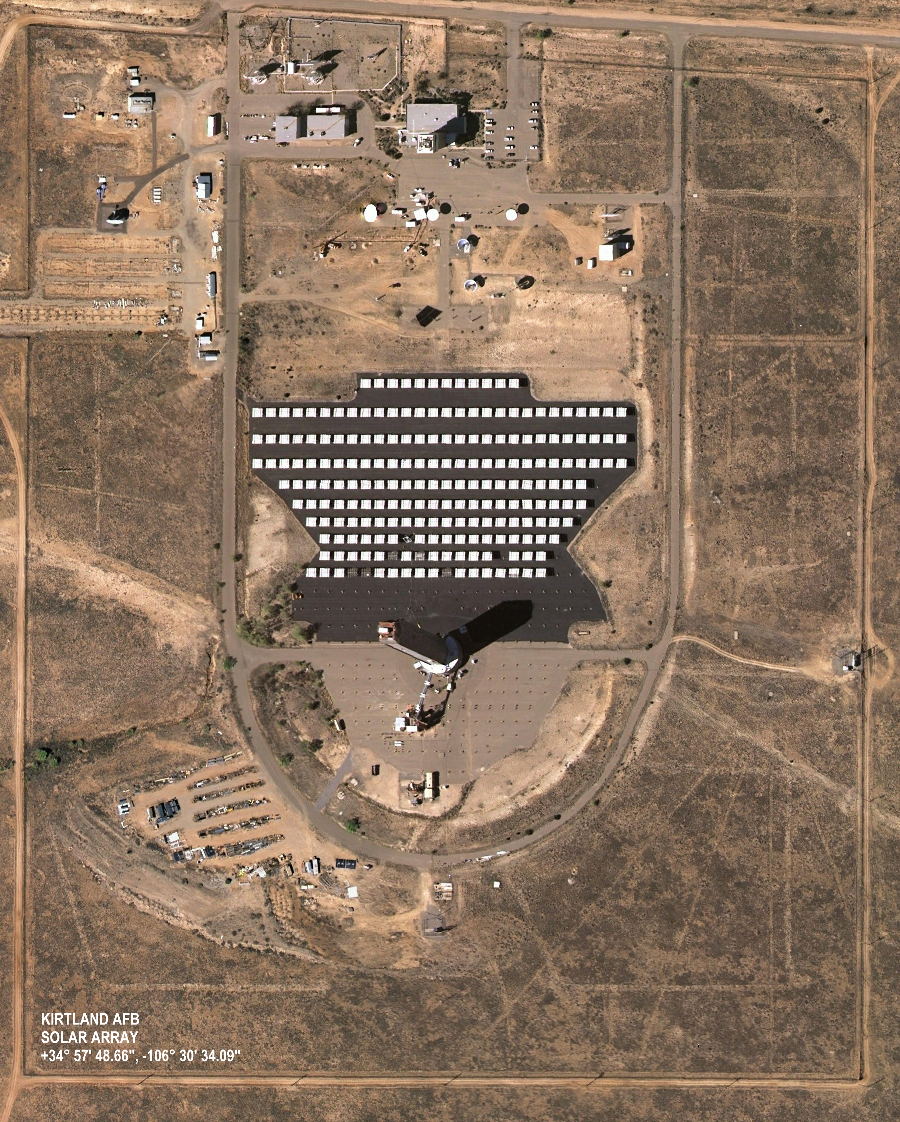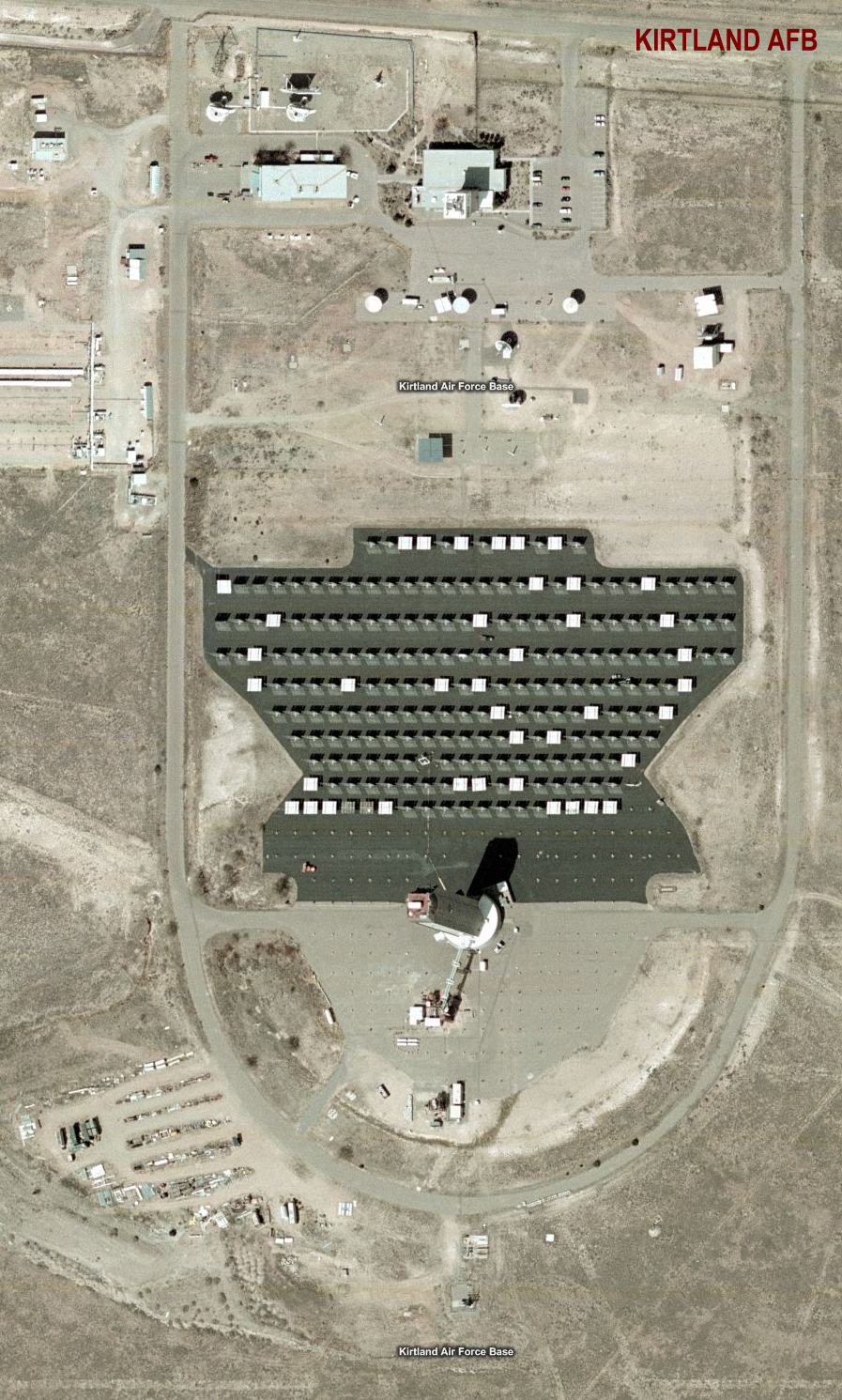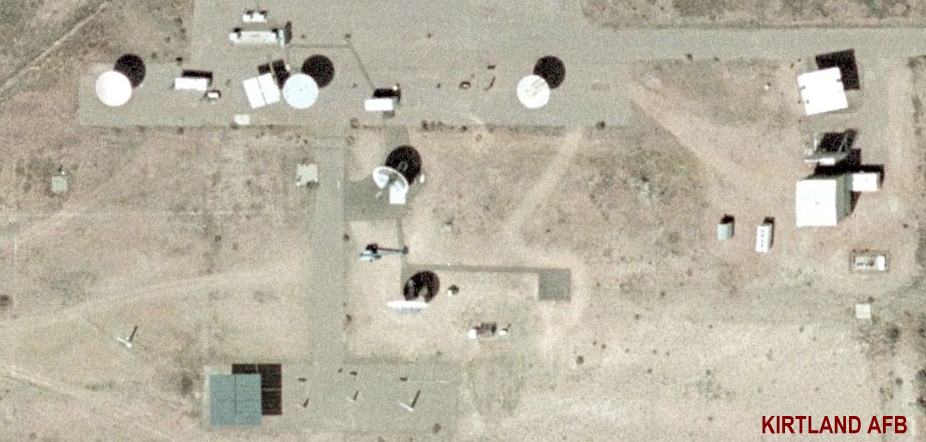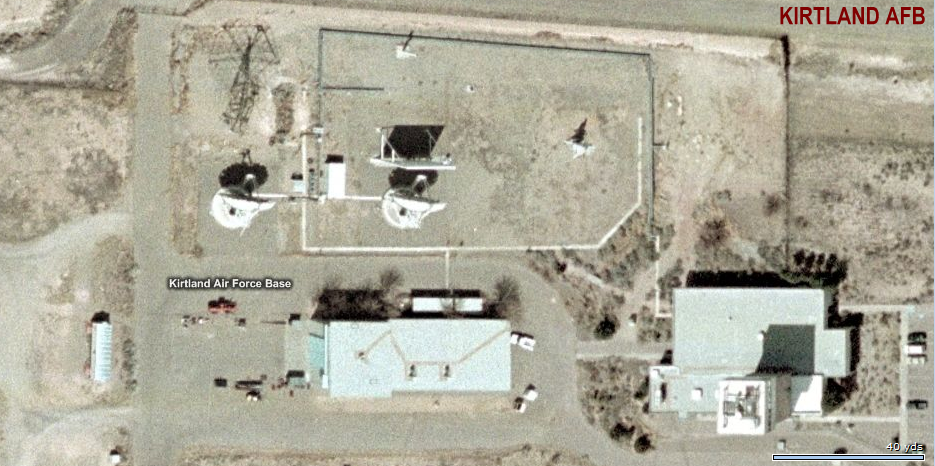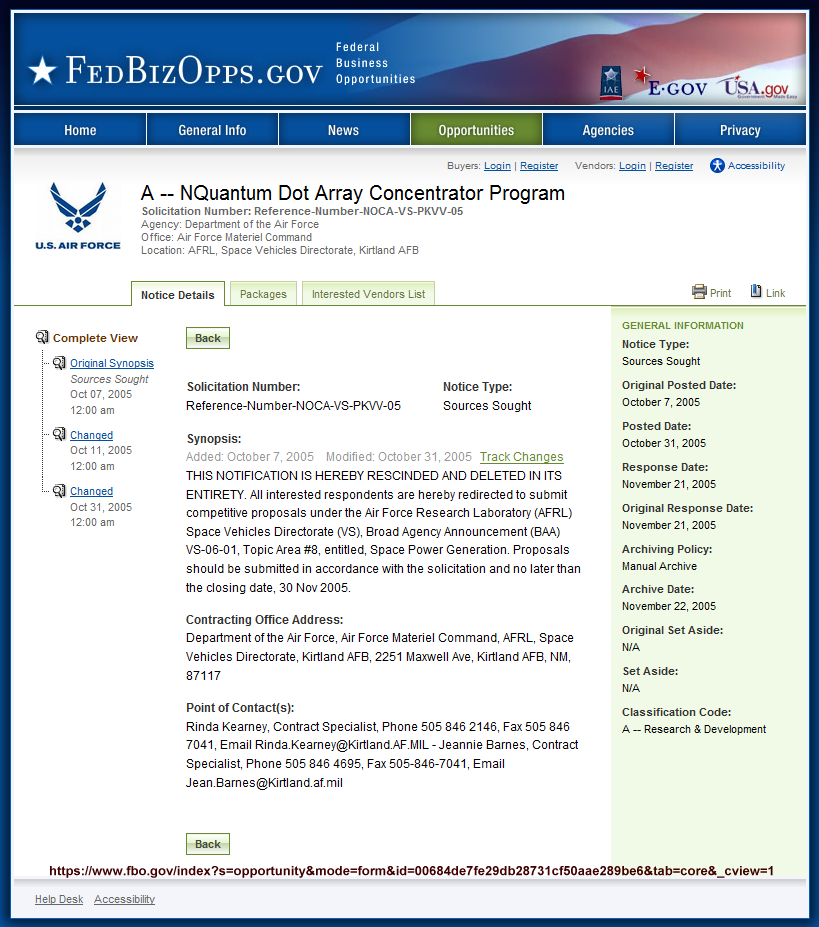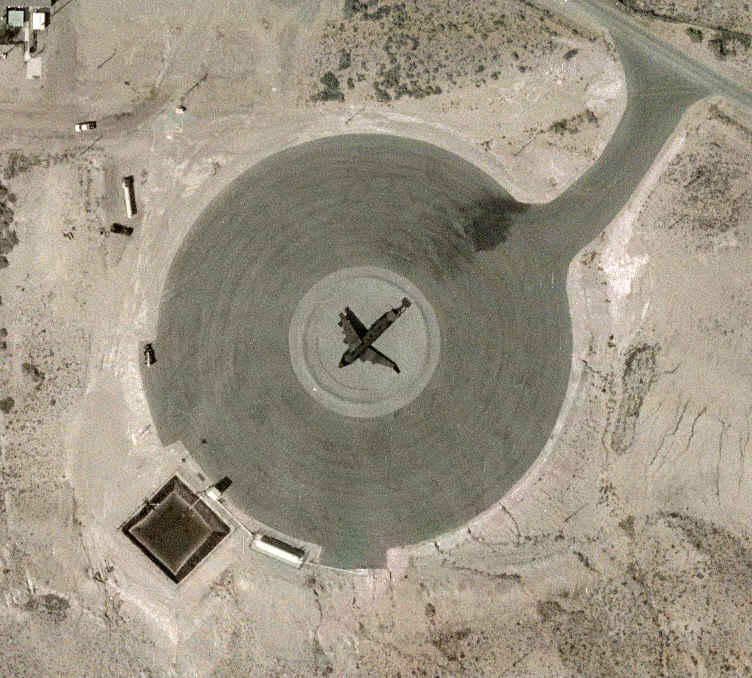|
New Mexico, in southeast Albuquerque |
|||||||||
|
..
Kirtland Air Force Base, New Mexico, in southeast Albuquerque, is nestled between the Sandia and Manzano mountain ranges. It is home to Air Force Materiel Command's Nuclear Weapons Center and its subordinate wings, the 498th Armament Systems Wing and the 377th Air Base Wing. It is also home to the Defense Threat Reduction Agency Albuquerque office, the Air Force Safety Center, the Air Force Inspection Agency, the Air Force Operational Test and Evaluation Center, the 58th Special Operations Wing, Space Development and Test Wing, the New Mexico Air National Guard 150th Fighter Wing, the Directed Energy and Space Vehicle Directorates of the Air Force Research Laboratory, the Department of Energy Albuquerque Office, the National Nuclear Security Administration and Sandia National Laboratories. |
|||||||||
| To begin our tour we will start with a presentation
from Cryptome. They have done excellent work on this area and it would
be silly to duplicate the effort. As we find more material we will add
Pegasus updates and other source images, but credit for the initial work
in presenting these areas goes to:
Cryptome's Eyeball Series: 6 Odd Facilities at Kirtland AFB From Cryptome: 18 January 2004. One of the Eyeball series.
Credits: Maps from Mapquest.com
These photos show six odd facilities located at Kirtland Air Force Base, Albuquerque, NM. Kirtland hosts Sandia National Laboratory, a premier nuclear and other research facility, the Defense Nuclear Weapons School and the Kirtland Underground Munitions Storage Center, a giant nuclear weapons storage area. While the facilities may be associated with Sandia's diverse research program, they could be run by other agencies or private institutions engaged in classified or open work as contractors to the US government. Cryptome welcomes information on the facilties. Send to jya@pipeline.com |
|||||||||
| Big Eyeballing
the Six Odd Facilities at Kirtland Air Force Base |
|||||||||
(Click on Image to Enlarge)ODD FACILITY 1 -- THE SQUAREA. writes:Odd facility 1 is a 2-reactor facility; I spent a week
there while I worked for the lab. The inner facility is the SPUR, Sandia
Pulse reactor. Plates of enriched uranium, basically, with a negative temperature
coefficient. It's used to irradiate military stuff (or used to be, I have
no idea when it was last used) as a simulation of an atomic explosion.
According to the people who had been there a while, when SPUR fired you
could be in the parking lot on the left with
Anyway, SPUR uses 'weapons grade' material, thus the safeguards. None of this was classified when I was there, by the way. The other area inside the main fence is ACRR, (Annular Core Research Reactor), a 2MW toy reactor used for various tests. We used it to play with diffractive optics; fun project. There's also GIF, the Gamma Irradiation Facility, inside the same building. Amusingly, the office building on the left was a minor scandal at the time; major cost overruns. A. further writes: A news item on SPUR: http://nucnews.net/nucnews/2000nn/0010nn/001019nn.htm#14Looks like they buried it after I left, which makes sense to me. A search of sandia.gov finds lots of links on GIF and the ACRR: http://www.sandia.gov/E&E/GIF_FS.pdf What is distinctive about this facility is that it is
the only one other than Pantex
Cryptome has seen that has a high-security-fenced area within a high-security-fenced
area, one fence around a principal facility at the right and another fence
around a smaller facility within. These high-security fences are most often
found at highest-level national security facilities such as presidential
aircraft
hangars and
nuclear
weapons storage areas, but none of these
have two double-fences such as those shown here.
|
|||||||||
ODD FACILITY 2 -- THE TRESTLEA. provides:Atomic Audit: The Costs and Consequences of U.S. Nuclear Weapons Since 1940 The Trestle Electromagnetic Pulse Simulator
The facility is the largest wood-and-glue laminated structure in the world. Aircraft tested here are subjected to up to 10 million volts of electricity to simulate the effects of a nuclear explosion and assess the "hardness" of electrical and electronic equipment to the EMP pulse generated by a nuclear burst. Credit: U.S. Air Force (courtesy Natural Resource Defense Council) R. writes: The wooden trestle is the world's largest all-wood
structure.
J. writes: Facility 2 at Kirtland is the "Trestle," a huge wooden structure used to support large aircraft while they were subjected to electromagnetic pulse simulations. D. writes: Something else to note about the trestle at Kirtland is that it is built entirely without metal fasteners (nails, bolts, etc). It's all wooden peg construction. This is to reduce the bounce effect of EMP on the aircraft from the large volume of metal that the connectors would be.
|
|||||||||
| ODD FACILITY 3 -- THE SLED
A. further provides: Note that http://mfnl.xjtu.edu.cn/gov-doe-sandia/afsec/afsec.htm has links to the rocket sled track and other Sandia things in the vicinity. A. provides: Sandia's Rocket Sled Delivers High-Speed Crash Test Albuquerque Journal
By John Fleck
From rocket ignition to crash, the whole thing was over in about the time it took you to read this sentence. The sled blasted down the track so fast that it slammed into its target before the sound -- the roar of a rocket and a sonic boom -- reached observerswatching from a tower 920 feet from the track. In a world where torture testing is the norm, the 10,000-foot
sled track might be the
The men and women at Sandia National Laboratories'
Area 3 specialize in slamming, spinning, shaking, dropping and burning
things, adding exquisite meaning to the words "worst-case scenario." Their
goal is to help ensure that all manner of technology, frommilitary equipment
to nuclear reactor containment vessels, will work under some pretty
Want to build a nuclear waste container tough enough to survive a fuel fire? How about a concrete wall able to take a hit from a fighter jet? U.S. nuclear weapon parts are spun on centrifuges here to make sure they can withstand the G forces of a rocket launch. But for the connoisseur of destructive testing, nothing beats the rocket sled. Some U.S. nuclear weapons have to hit the ground and still be able to detonate. The men and women at Area 3 just need to know how fast it will hit, and they can create a test for a mock nuclear weapon that simulates the real-world environment it might face. The phrase "rocket sled" has become a cliché to describe something exceptionally fast, and the real thing lived up to its billing in a recent test. Duane Patrick hovered over the 6-foot, 91/2-inch sled, carefully adding reflective tape. Patrick and his colleagues built the sled to test a laser tracking system developed at Sandia. Historically, experienced camera operators with high-speed film cameras would stand on an observation tower, following the action by hand. That relatively low-tech approach is still used. For this particular test, two cameramen were on the observation tower filming. But the truck-sized laser tracking system provides more precise data. Bouncing a laser off the reflective tape or mirrors mounted on the rocket, the tracker controls cameras that follow the sled down the track. It also can provide precise data on the speed and position of the sled. Once Patrick had the tape affixed to the rocket, he and the other members of the crew cleared out, heading for their various observation posts, and a safety crew double-checked to make sure the test area was clear. The 10,000-foot track Patrick was using for his test
and an older 2,000-foot track cross open desert land near the southern
edge of Kirtland Air Force Base, southeast of the Albuquerque airport's
runways. At one end, rocket sleds are mounted to the rails and fired on
their way. At the other, batteries of sophisticated cameras record the
sometimes dramatic results as the sled slams into its target. The action
is measured in milliseconds. "Things happen really fast
That allows the scientists to slow things down and figure out what happened, explained Jack Reed, one of the camera experts. "To the human eye, it's just a blink," Reed said. Sandia's most dramatic and famous sled track test was done in the spring of 1988. An F4 Phantom fighter jet was mounted on a sled and slammed into a concrete wall to simulate an airplane crashing into a nuclear reactor containment vessel. The plane was obliterated. The wall survived. Sandia's first rocket sled track, the 2,000-foot one, was built in 1951. The section track was built 5,000 feet long in 1966, then lengthened in 1985. Patrick's laser tracker test was a relatively small one by sled track standards. The sled was designed to run on just one of the track's two rails. All that awaited it at the end of the track was a piece of thick steel and a pile of dirt. On a radioed countdown from the test control center, three small explosives along the length of the track were set off, noisemakers to scare away birds that like to sit on the rails. "With a supersonic sled, the birds can't hear it coming," said Steve Heffelfinger, who manages the test site. The rocket was electronically fired, and with a flash and a cloud of smoke it shot down the track, accelerating rapidly before disappearing into the dirt pile at the end of the track. An analysis of the data afterward showed that it took just 3.47 seconds to make the 6,000-foot trip. Its top speed, 2 seconds into the trip, was 2,700 feet per second, according to data reconstructed by Patrick's laser tracker. In his office afterward, Patrick showed the laser tracker videotape of the test, slowing it down to look, frame by frame, at the way his system had performed. As the sled rocketed down the track, shock waves could be seen blasting away through the air -- visual evidence of the sonic boom. The excitement over, the scientists turned to their real work -- analyzing the data they collected. "This is the heart of our business," Heffelfinger explained, as he looked over Patrick's shoulder at the video image. "People think it's the wham-bam stuff, but this is it." Copyright 2003 Albuquerque Journal
This tracked facility appears to have a sled or other
tracked device on it.
|
|||||||||
ODD FACILITY 4 -- THE POLEA. writes:The pool in Odd-4 appears to be the "water impact facility": http://mfnl.xjtu.edu.cn/gov-doe-sandia/afsec/facility/water.htmR. writes: I've been told by another friend who works for Sandia
that the giant pool is for
This tall pole and pool with extended pipe or trench
extending outside the fence, has a smaller pole at left.
|
|||||||||
ODD FACILITY 5 -- THE STOVEP. writes:Info on "Odd Facility 5 - The Stove" can be found here: http://www.eere.energy.gov/sunlab/ I visited the base back in 94 to check out a pretty good
museum they have on-base on atomic weaponry and saw that they also had
a visitor area for this project. It's pretty remarkable. If I remember
correctly the mirrors (the small blackish square things) track the sun
an concentrate the light at the stack. At the time they were using liquid
lithium (heated by the focused solar rays) for high temperature experiments. Again, this was 10 years ago and it didn't seem to be a closed or secret project at the time. A. provides: http://www.energylan.sandia.gov/sunlab/R. writes: My boss's husband works at #5. The things that look
like radio telescopes focus sunlight to heat sodium and power a sterling
engine. The huge array of mirrors focus sunlight at the top of the
tower at the bottom for another means of mechanical
solar power. As a fun aside, while the tower is being used, birds often
fly into the beam and burst into flames.
This appears to be a solar facility, for photovoltaic research or mirror-focused and -enhanced directed sunbeam. The numerous disk antennas are curious, and one of them, at the top center,appears coupled with a reflector or flat square antenna.
|
|||||||||
|
..
..
|
|||||||||
|
|||||||||
ODD FACILITY 6 -- THE BIRDA. writes:'Odd Facility 6' is an aircraft fire practice area.
A bullseye spotting of what appears to be an aircraft
or a mock-up, whose tail shadow is
|
|||||||||
|
|||||||||
| FAIR USE NOTICE: This page contains copyrighted material the use of which has not been specifically authorized by the copyright owner. Pegasus Research Consortium distributes this material without profit to those who have expressed a prior interest in receiving the included information for research and educational purposes. We believe this constitutes a fair use of any such copyrighted material as provided for in 17 U.S.C § 107. If you wish to use copyrighted material from this site for purposes of your own that go beyond fair use, you must obtain permission from the copyright owner. | |||||||||
|
|
|||||||||
